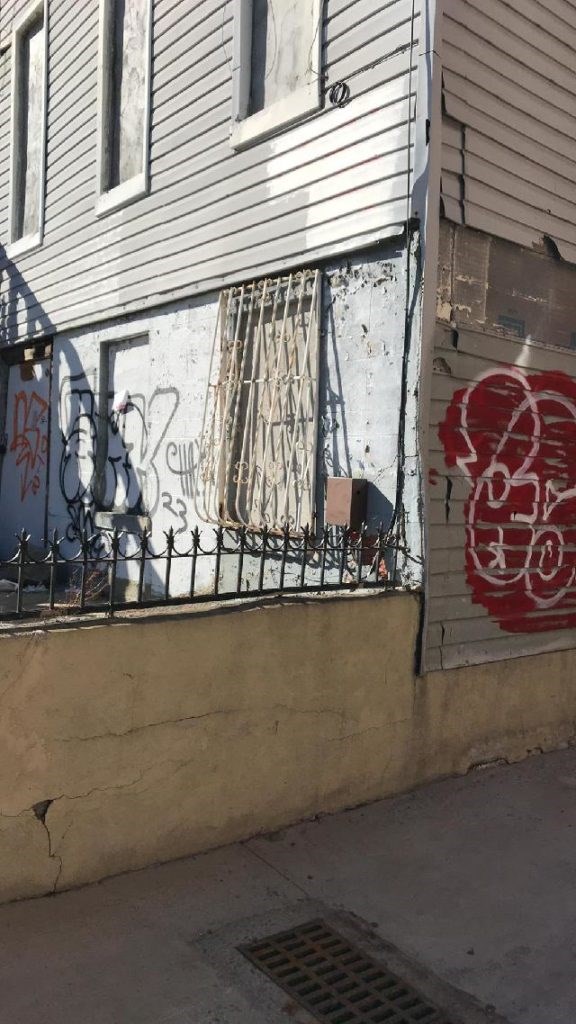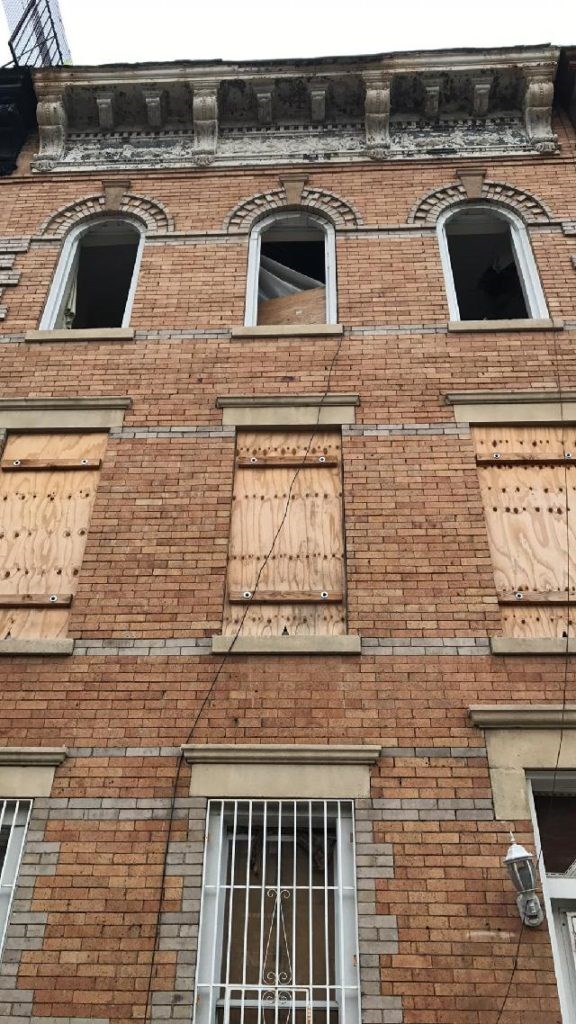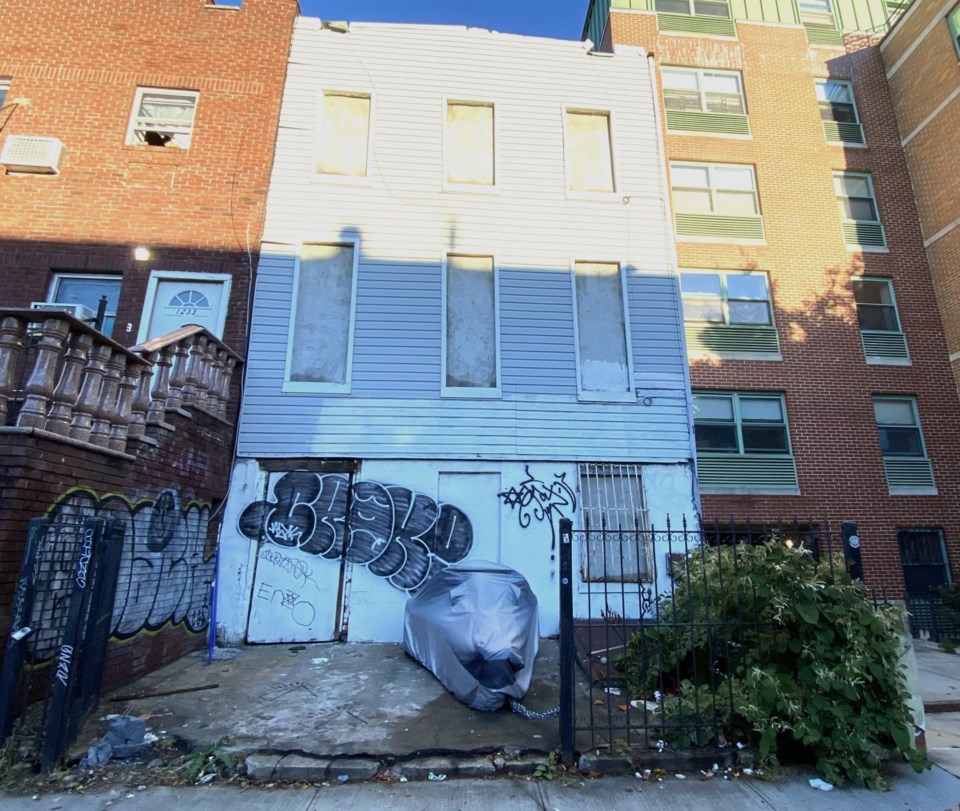Plastic cups, broken glass and food wrappers lay on the concrete and in a tangle of vines in front of a graffiti-covered vacant house in Bushwick.
Until recently, this house was a ‘zombie home’ — a moniker for one- to four-family vacant or abandoned homes that either have a mortgage in delinquency or are in the foreclosure process.
Though the graffiti persists, the Department of Housing Preservation & Development (HPD) was able to facilitate structural improvements to safeguard the home last year — namely repairing broken siding and sealing the windows — thanks to its Zombie Homes Initiative, a program formed to enforce the 2016 “Zombie Law.”
The 2016 legislation requires banks and mortgage servers to inspect, maintain and report zombies or face penalties of up to $500 every day the properties are not maintained. The city recently announced that it has recouped more than $1 million in penalties. More than half of that pot — $667,000 — came from properties in Brooklyn.

Central Brooklyn is a known zombie hot spot, according to an HPD spokesperson. The registry is not public, but HPD confirmed that it contains 1,126 total NYC properties and nearly 40 percent are in Brooklyn. (Officials estimate the total number of zombies could be closer to 2,000.)
In the case of the Bushwick house, HPD referred the property to the NYC Law Department in 2018 and settled with Wells Fargo, the mortgage holder at the time, for $11,900 in 2020. (The property has since officially gone through foreclosure and is now part of Wells Fargo's Real Estate Owned investment portfolio.) That case represents one of 59 Brooklyn zombies the city has targeted with legal action since 2017—26 have reached settlements.
“The Zombie Homes Initiative holds banks and lenders accountable for allowing vacant and abandoned homes to fall into disrepair at a time when New Yorkers desperately need more affordable opportunities to purchase a home,” said William Fowler, HPD deputy press secretary.
Properties become zombies when a bank begins the foreclosure process but doesn’t complete it. Homeowners will sometimes vacate anyway, leaving the home in a foreclosure limbo state.
Many zombies are remnants of the 2008 subprime mortgage crisis, according to a report from the Local Initiatives Support Corporation (LISC) and the Urban Institute.
The report notes that Black and brown homeowners were frequently the targets of predatory lending schemes.
“In the wake of the Great Recession, Black households had over half of their household wealth erased through foreclosures and housing value declines,” the report reads.
The city is pursuing zombie home acquisition and rehab with the Restored Homes Housing Development Fund Corporation and the Center for NYC Neighborhoods (CNYCN).
“Vacant and abandoned properties provide an untapped source of affordable housing,” Fowler said. “That is the ultimate goal for this program: to breathe new life into zombie homes by turning neighborhood blight into new opportunity."

But now that pandemic-related restrictions on foreclosures have ended, more New Yorkers are at risk of foreclosure. More than 10 percent of homeowners in several neighborhoods in Central and East Brooklyn were behind on mortgage payments as of last September, according to data from CNYCN.
Sabrina Bazile, a senior program manager with the CNYCN’s Black Homeownership Project who has also worked for HPD, said many people don’t understand how long the foreclosure process takes or know their options for fighting it.
“People get that notice and think ‘I have to leave now,’” Bazile said.
Several agencies and programs help people keep their homes, including NHS Brooklyn, Brooklyn Neighborhood Services, the city’s Homeowner Help Desk and HomeFix. The Black Homeownership Project is launching Generation 2 Generation this month to provide pro-bono estate planning services to Black homeowners and help mitigate issues such as deed theft and inherited debt.
“Homeowners of color are dealing with systemic issues,” Bazile said, listing redlining, environmental destruction and gentrification. “We know the issues and we actually have the tools to address them, it’s just [a matter of] matching them and getting the city and state to come to the table in a serious manner.”




